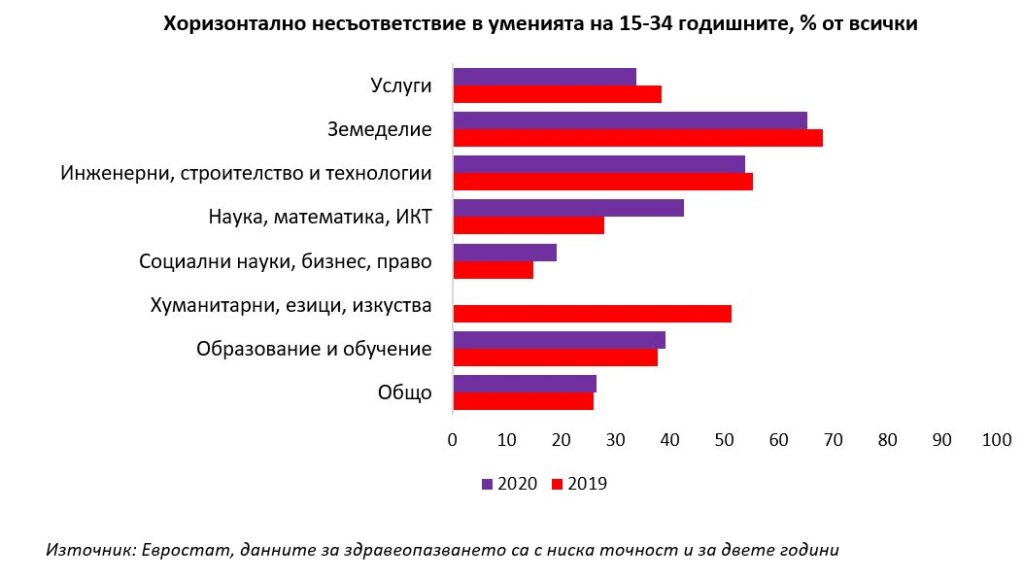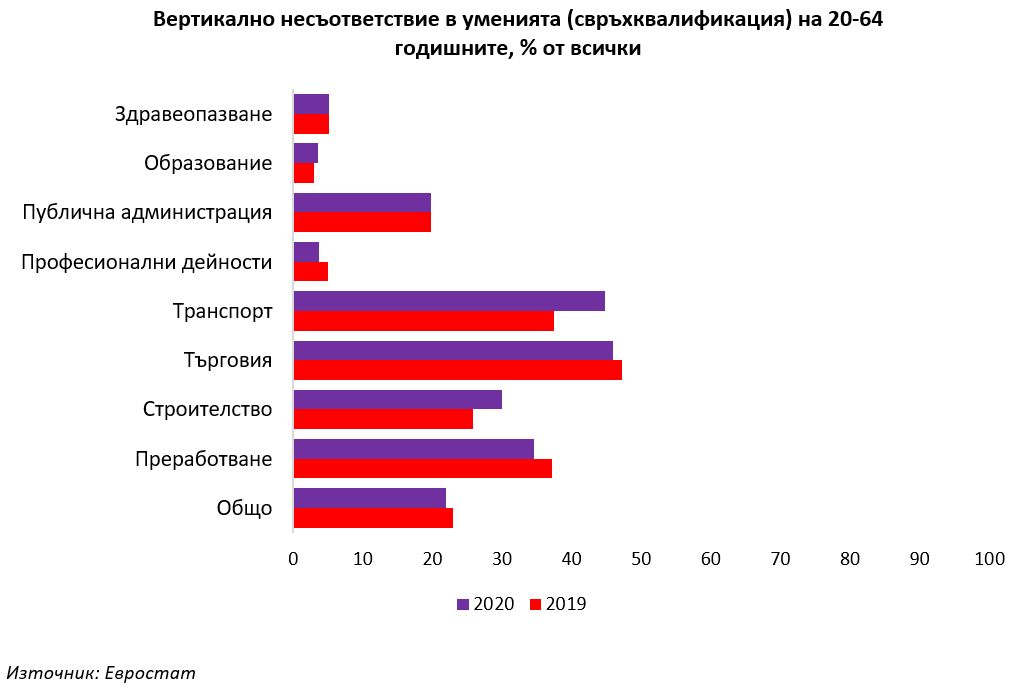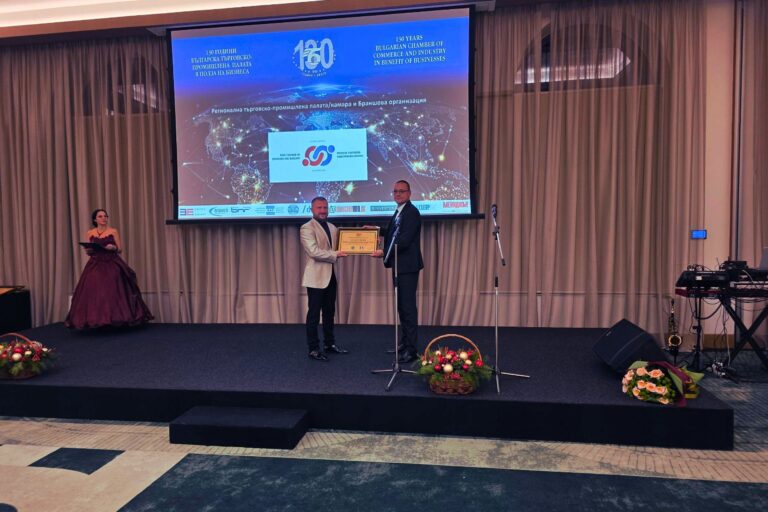Two dimensions of labor force skills mismatches
The past two years have seen significant shifts in the labor market, mostly under the pressure of restrictive measures and diverging industry dynamics. While tourism and related activities were rapidly losing workers, some industry and the ICT sector continued to add jobs. These changes inevitably mean a change in the skills and qualifications that are most often sought after in the labor market. Although assessing this type of needs and deficits is generally difficult
The methodology most commonly applied by European statistics[2] distinguishes two types of workforce skills mismatches:
Horizontal, in which workers are employed in jobs that do not correspond to the education they have acquired, and
Vertical, in which they are employed in jobs that require a lower qualification than that of the workers.
Both inconsistencies are undesirable, since the horizontal ones show that the structure of education supply does not correspond to the demand of the labor market, the vertical ones - that some workers are overqualified for the work they do. This information can also serve as a basis for fine-tuning the provision of education, especially by the public sector.

Horizontal mismatches in the skills of 15-34-year-olds in Bulgaria marked a slight increase in 2020. They are most visible in engineering specialties, construction and technology; this most probably reflects the differences between the profile of vocational education in many areas of the country and the structure of employment by economic activities in the region. The same is true for agriculture, where the largest discrepancies are observed, with between 60 and 70% of all those with an agricultural education employed in other activities. It is also noteworthy that despite the increased demand for ICT personnel during 2020, there was also a significant increase in the mismatch, up to 43% of people with education in the field, most likely as a result of the high concentration of high-tech jobs in the capital.

The vertical mismatch data show that 22% of all employed people between the ages of 20 and 64 are in jobs that require a lower qualification than what they hold. Of the activities for which Eurostat publishes data, the share of the overqualified among those employed in transport and trade is the highest, but with opposite trends - while in 2020 there is a significant increase in transport, there is a slight decrease in trade in the number of workers with a higher of the required qualification. There is also significant vertical disparity in construction and manufacturing.
A review of Eurostat data indicates that the Bulgarian labor market continues to face significant skills mismatch problems; the overall dimensions of the vertical and horizontal unconformities are relatively commensurate. They most often affect economic activities in which there is a relatively high demand for new workers, but also those in which there is an oversupply of education. Two problems come to the fore, the resolution of which could alleviate the discrepancies – the lack of a sufficiently strong connection between education and the labor market and the practical absence of adult education and retraining.
Author: Adrian Nikolov, Institute of Market Economy





